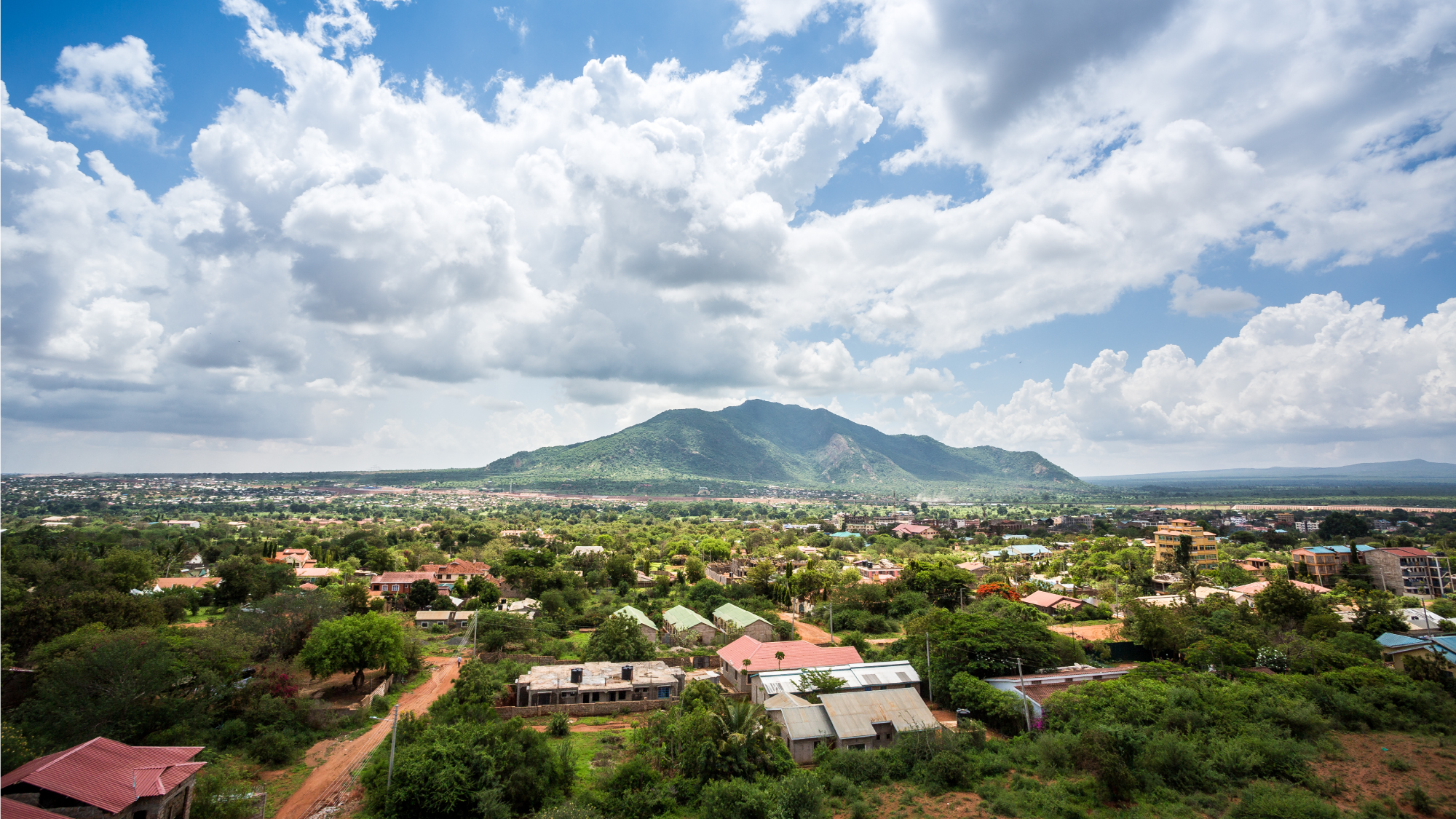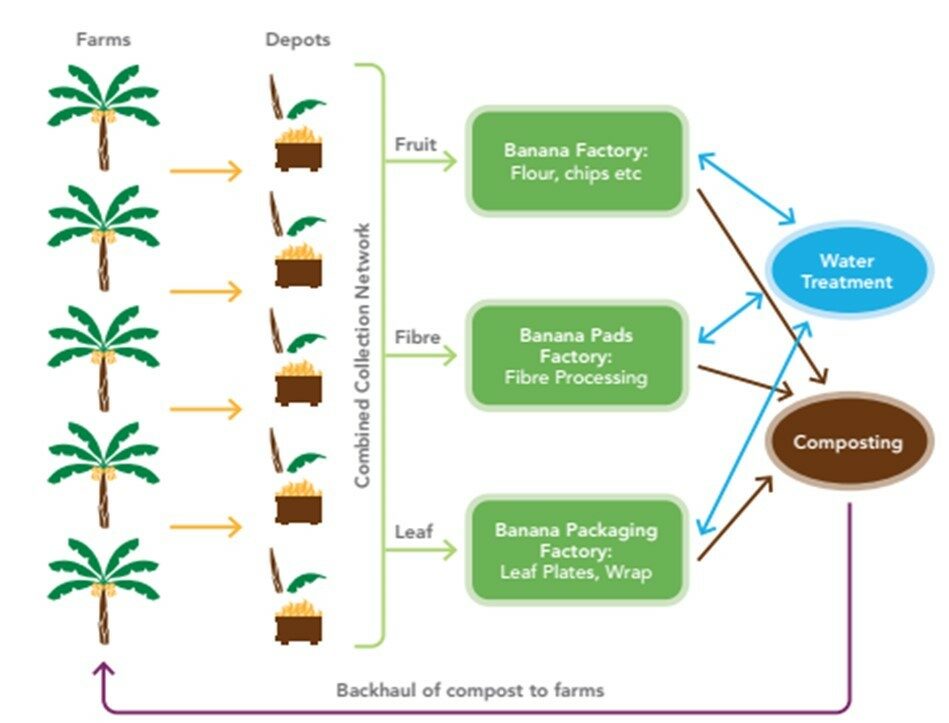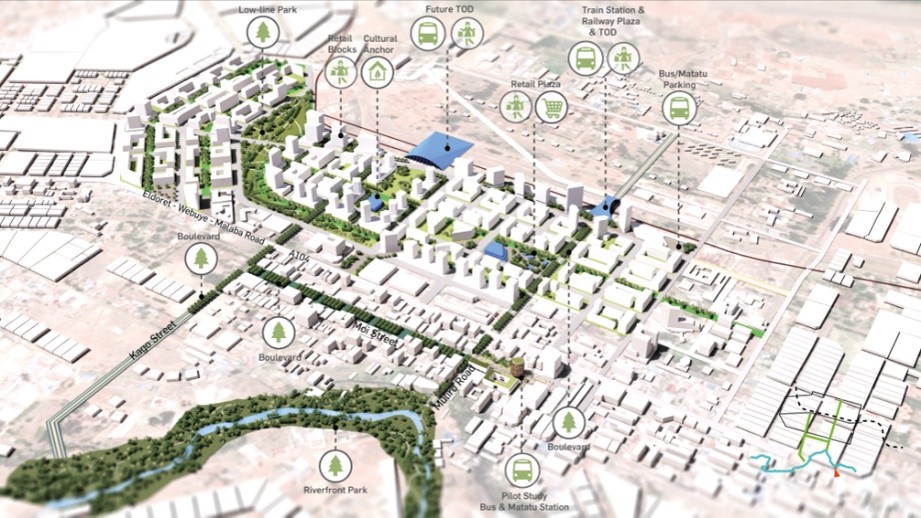
Last month’s COP27 in Egypt has brought renewed urgency for vulnerable Sub-Saharan countries to adapt and mitigate against the impacts of climate change.
In Kenya, climate change is expected to cause more extreme heat events, increasing aridity and changes in rainfall patterns. Not only does this pose a risk to agriculture, Kenya’s primary economic activity, it also threatens millions living in urban areas. Here, the team on our Sustainable Urban Economic Development (SUED) Programme – funded by the UK’s Foreign, Commonwealth and Development Office – share how they are supporting intermediary cities to better adapt and mitigate against climate change and deliver green growth.
As Kenya rapidly urbanises, it is its intermediary cities that are growing the fastest. For example, Malindi, situated in the North Coast, experienced a population growth of 45 per cent between 2009-2019. These intermediary cities have struggled to expand their infrastructure, service delivery and create jobs necessary to support this rapid population growth. This limits how they expand – and when they do, it may go without considering the future urban challenges of climate change.
For this reason, the support to fast-growing intermediary municipalities across Kenya is at the core of SUED. stablished to attract investment for critical climate resilient value chain and infrastructure projects, we have supported twelve municipalities to develop sustainable urban economic plans to guide their economic growth.
Delivering Green Growth – but how?
The aim of green growth is to foster “economic growth and development while ensuring that natural assets continue to provide the resources and environmental services on which our well-being relies” (Organisation for Economic Cooperation and Development, OECD).
To be successful, green growth needs to reflect and respond to the local conditions, including comparative and competitive advantages for economic development. In terms of programme design, a robust methodology needs to:
- Require clear actions for the development of sectors in their own right,
- Promote ecosystems of economic projects, and
- Identify appropriate climate-resilient and inclusive infrastructure proposals to support growth across different sectors.
For international development practitioners, this means that the design of economic work that we do across sectors should be developed in synergy rather than in silos, as some actions are likely to affect several sectors at once. It’s also important to consider the challenges around sustainability, climate resilience, inclusivity, circular economy and conflict sensitivity.
The following examples from SUED give insights into how we did this in the development of urban economic plans (UEPs).

Kisii’s banana value chain as envisioned by SUED.
Promoting value addition and job creation through circular economy
We identified and defined any opportunities that:
- Focused on creating value addition through processing and collection of previously overlooked waste and by-products. Banana fibres and coconut, for example, can be used to produce a range of products, including absorbent pads, rope, cardboard, tea bags, textiles, matting or agri-processing waste for feedstock.
- Commercialised the process of waste. For example, sewage sludge that is processed with larvae of the black soldier fly can be used for the production of compost, charcoal briquettes or biogas.
Protecting the environment and natural resources
Cities and towns rely on natural resources within their wider urban catchment areas – regardless of their location, climate zone, physical geography, population and economic size. Any risks to water, food and biodiverse natural habitats – especially when they touch upon clean energy, water or food supply systems – are a risk to delivering basic services and affordable food to people. The UEPs ensured that the projects protected the environment and natural resources while boosting Kenya’s urban economic development.
Besides adapting to climate change risks, green cities also have clear health benefits for society. Through SUED’s urban economic plans, we were able to redefine green spaces and the way city centres are designed for business as well as traffic management. Now, multi-functional river parks – sponge cities – offer the potential to protect against floods, while sustainable urban drainage and natural flood management features were also incorporated into the revitalisation plans for the municipalities.
Ensuring integrated nature-based approaches
Our SUED team carefully considered the pressures that would come with the future growth of municipalities and their high dependence on regional water and natural resources. These pressures come from rapid and uncontrolled urbanisation, poor economic practices, pollution and degradation of resources, as well as climate change. Nature-based approaches – and their focus on protecting natural resources and enhancing environmental resilience – are therefore key to making agri-processing activities more sustainable.

Using a nature-based approach to support the regeneration of the central business district in Eldoret.
Similarly, a blue economy approach for areas that are rich in marine and coastal resources can further support economic growth, jobs, livelihoods, food and energy security.
Through SUED, we supported coastal municipalities to advocate for biodiversity, driving measures to provide climate protection through carbon sequestration – which is also called blue carbon when taken and stored in marine environments – and to support nature-based tourism and coastal protection. And the economy? It benefits from potential private investment, for example where businesses fund mangrove or seagrass conservation initiatives through voluntary carbon markets that lead to carbon sequestration – whilst offsetting their own emissions.
Our work on SUED shows: urban development will not be sustainable unless it is also resilient to current and emerging climate risks. By integrating climate resilience into the programme’s urban economic plans, SUED provides an opportunity to reduce the impacts of existing hazards, such as flooding and heatwaves, while preparing for the challenges that lie ahead.